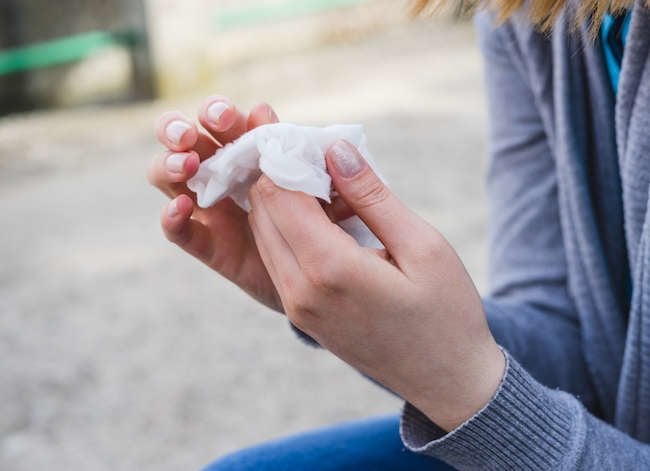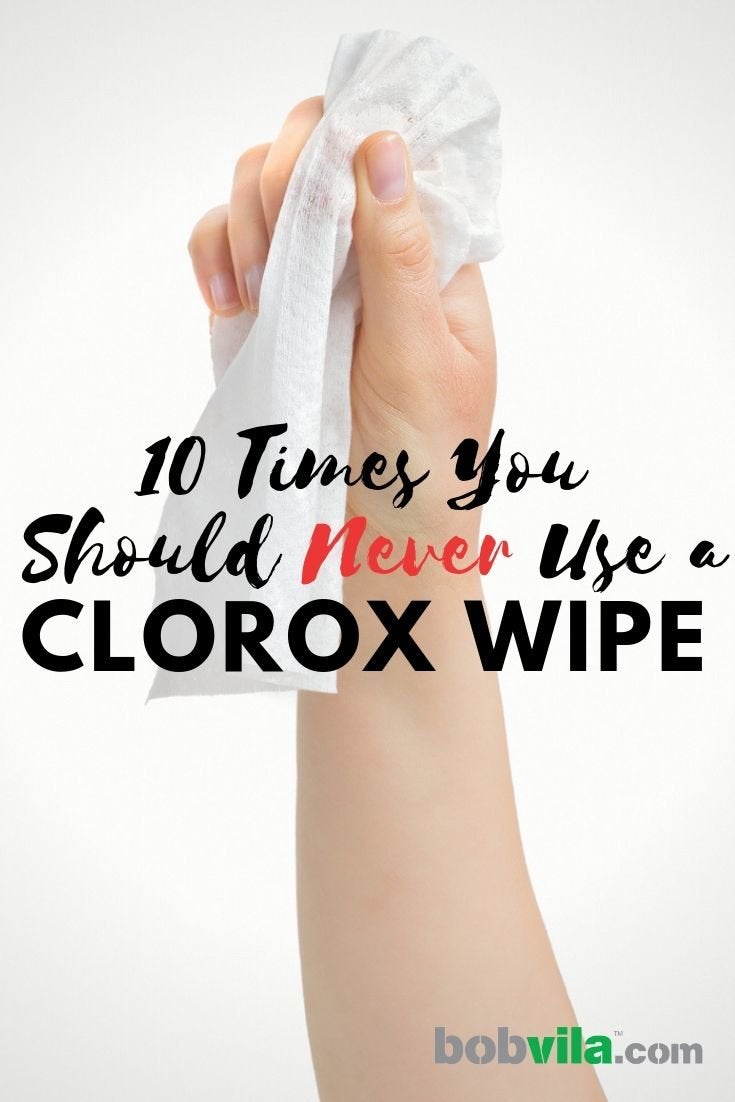We may earn revenue from the products available on this page and participate in affiliate programs. Learn More ›
To Wipe, or Not to Wipe?
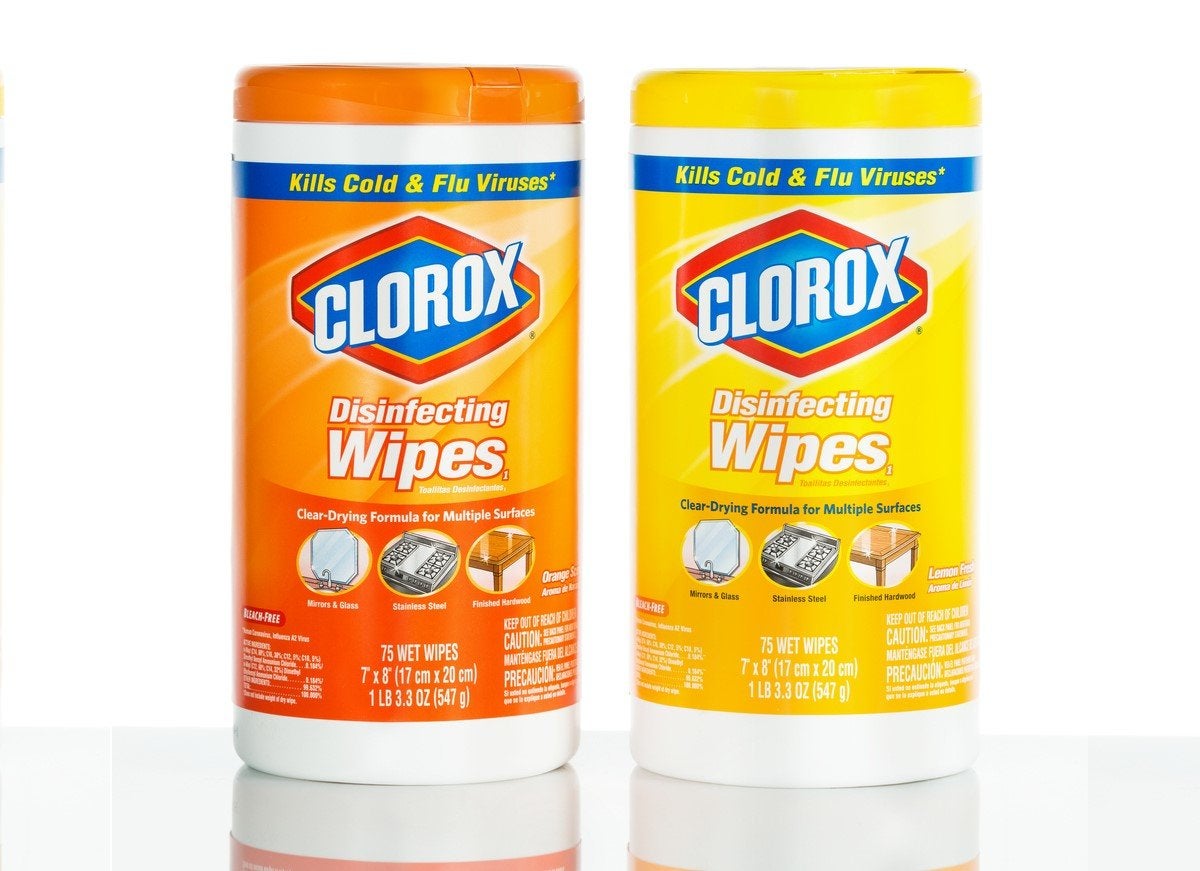
Wherever you happen to be, germs are there too, which is why products like Clorox wipes are so handy. You can stock up at the grocery store or on Amazon and then stash them under the sink, in the car, and even in your purse to kill 99.9 percent of viruses and bacteria all manner of surfaces. But before you reach for a Clorox wipe, make sure it’s 100 percent safe to use on the particular mess you have at hand. Here are 10 instances when you should never use a Clorox wipe.
Cleaning Your Skin
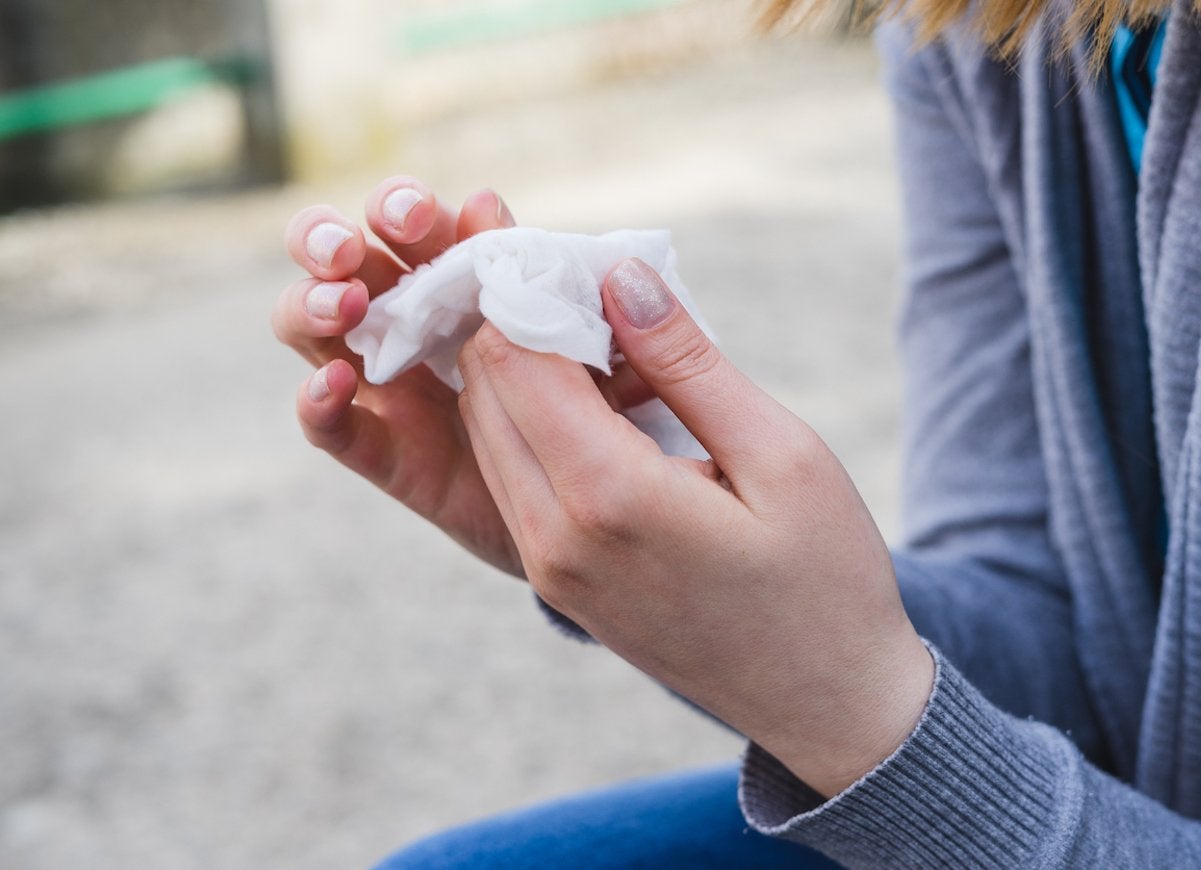
You probably already knew this one, but it’s still worth a reminder that Clorox wipes are not baby wipes. The chemicals in these wipes are intended to clean hard surfaces, not your skin, your kid’s skin, or your pet’s fur.
Wiping Granite Countertops
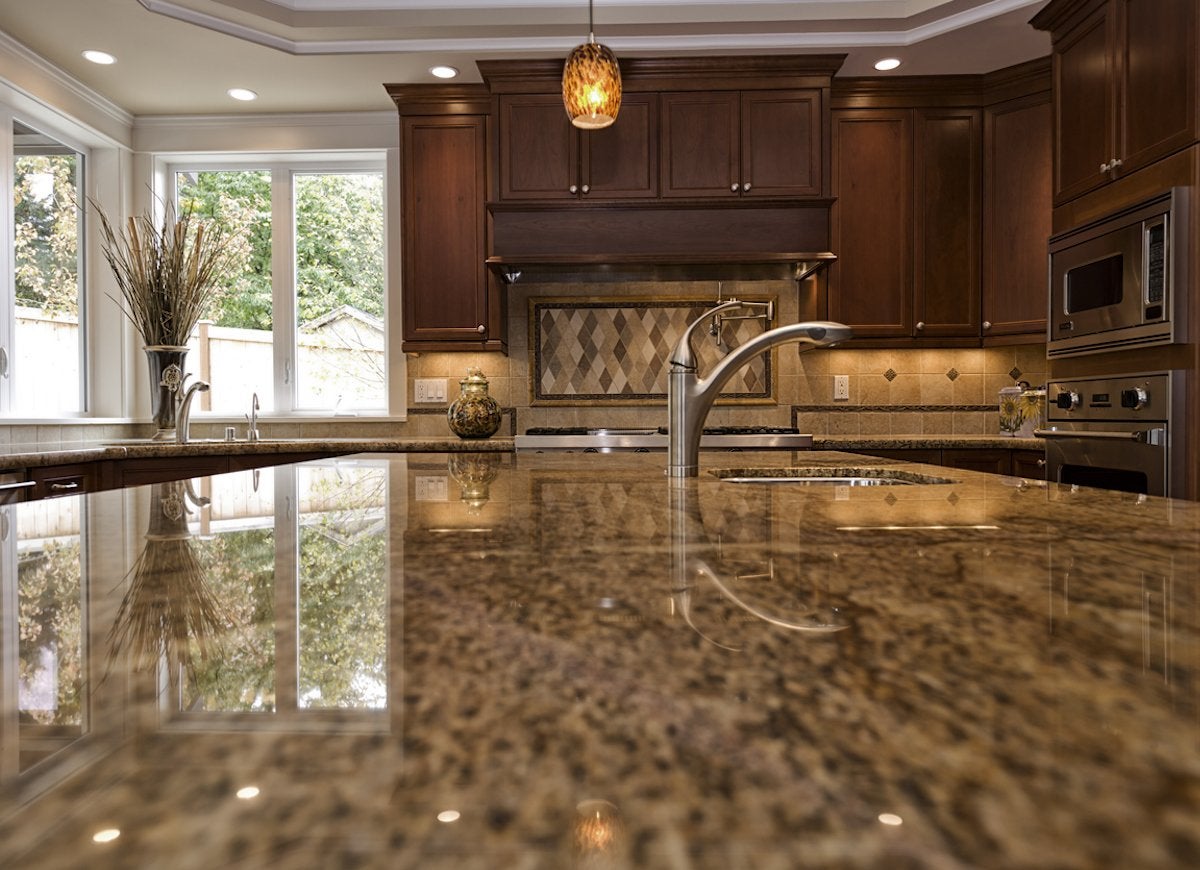
It’s so easy to use Clorox wipes in the kitchen to disinfect, pick up crumbs, and tackle tough cooking stains, but you may want to think twice before using them on granite countertops. Because granite is a porous material, it is typically sealed for protection. Clorox wipes can actually eat away at the sealant, putting that pretty granite surface at risk.
Disinfecting Dishes
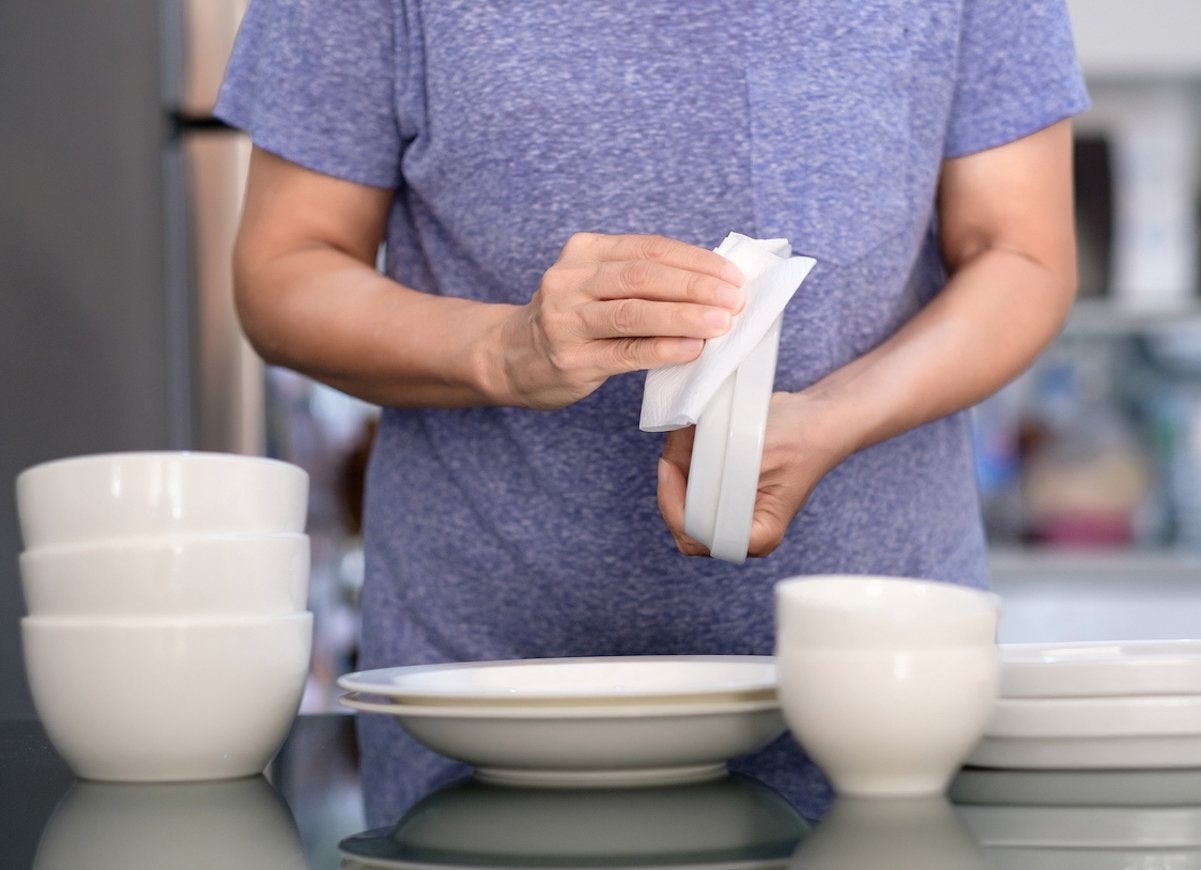
You may be tempted to just quickly clean off your dishes, silverware, or a glass with a Clorox wipe, but don’t! Never use Clorox wipes to clean anything your mouth will touch. They contain chemicals that could be harmful if ingested.
Related: 16 Things to Clean in Your Home After You’ve Been Sick
Polishing Your Eyeglasses
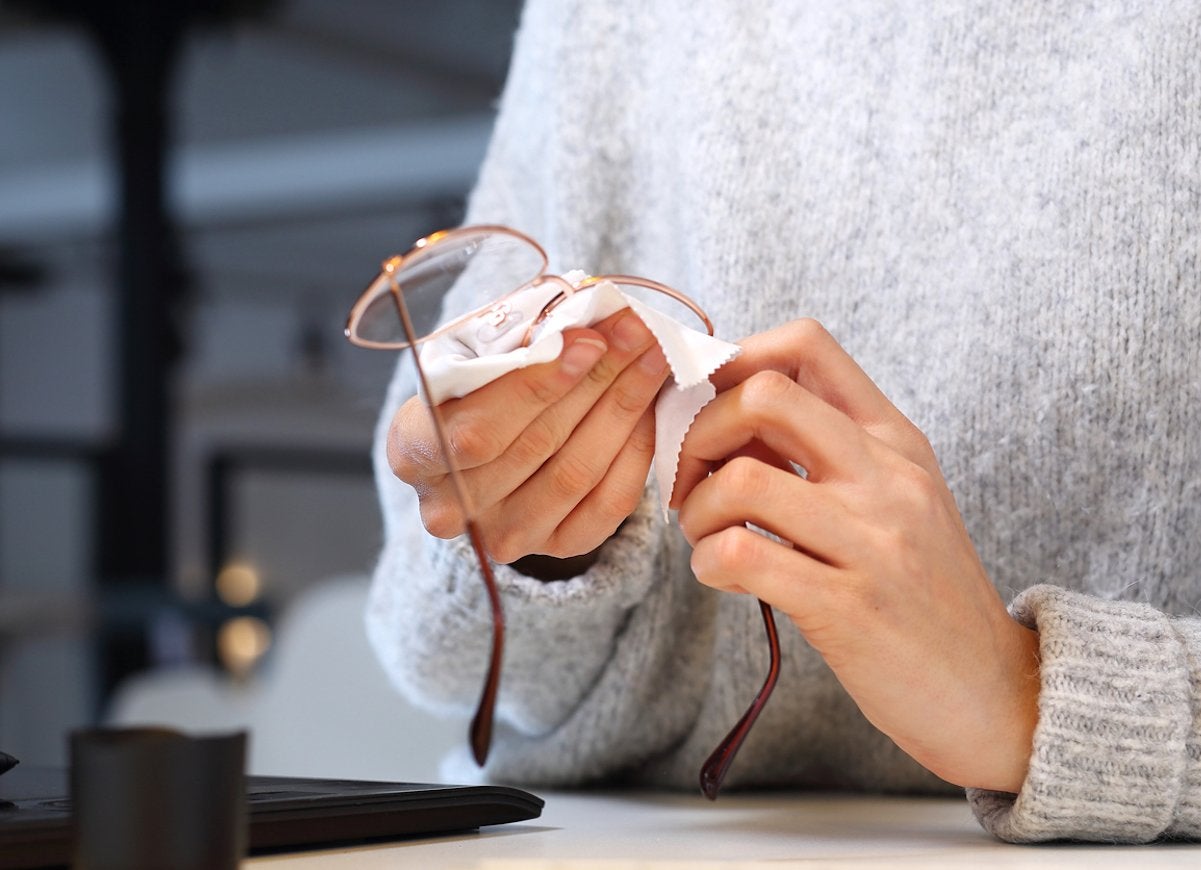
If you’re out of lens wipes, don’t try and reach for a Clorox wipe as a substitute. Many of the chemicals in Clorox wipes can cause mild irritation if they come in direct contact with your eyes and may even warrant a not-so-fun call to your physician.
Sanitizing Your Sofa
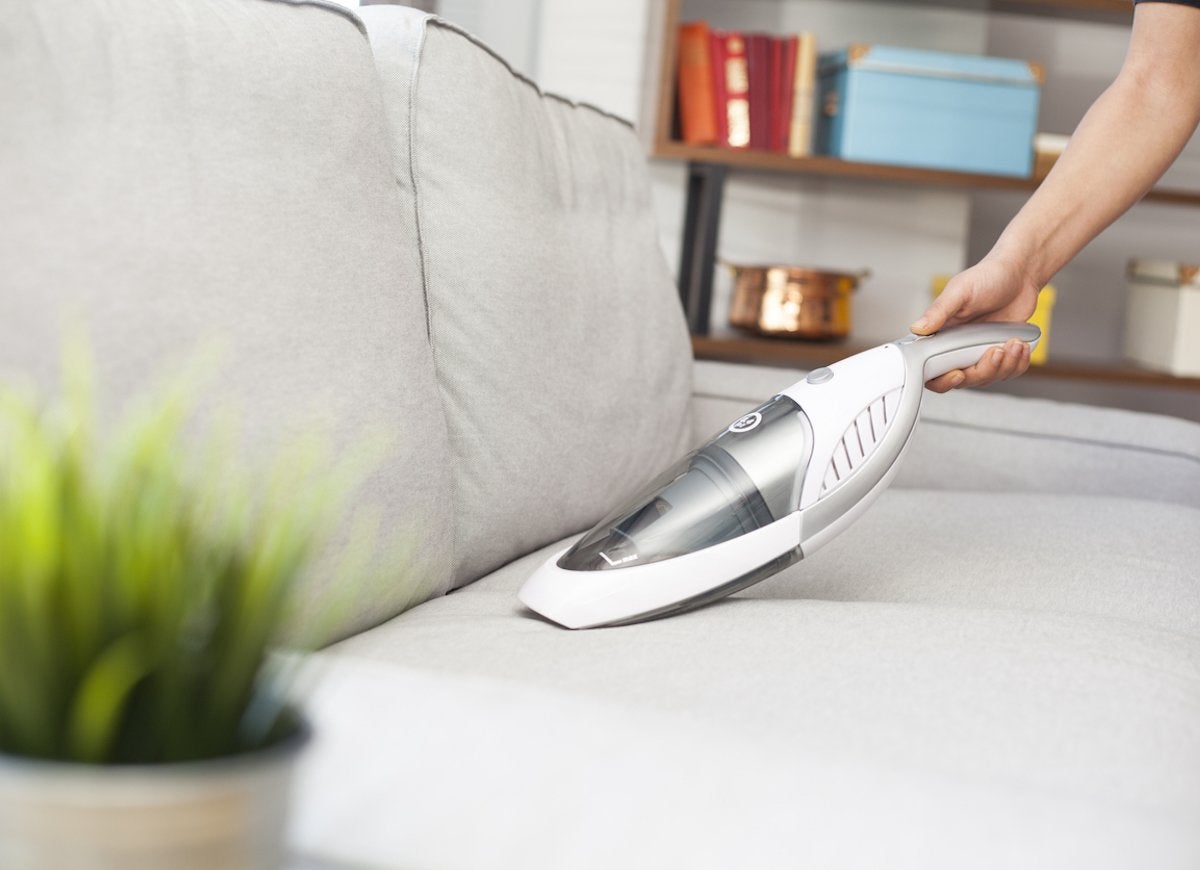
Clorox wipes are sudsy enough to use for scrubbing, but it’s not a good idea to use them on upholstered surfaces like sofas or mattresses. The alcohol in Clorox wipes can stain or fade fabrics. If you use these wipes on your sofa, you may end up ruining a perfectly good piece of furniture.
Wiping Off Untreated Wood
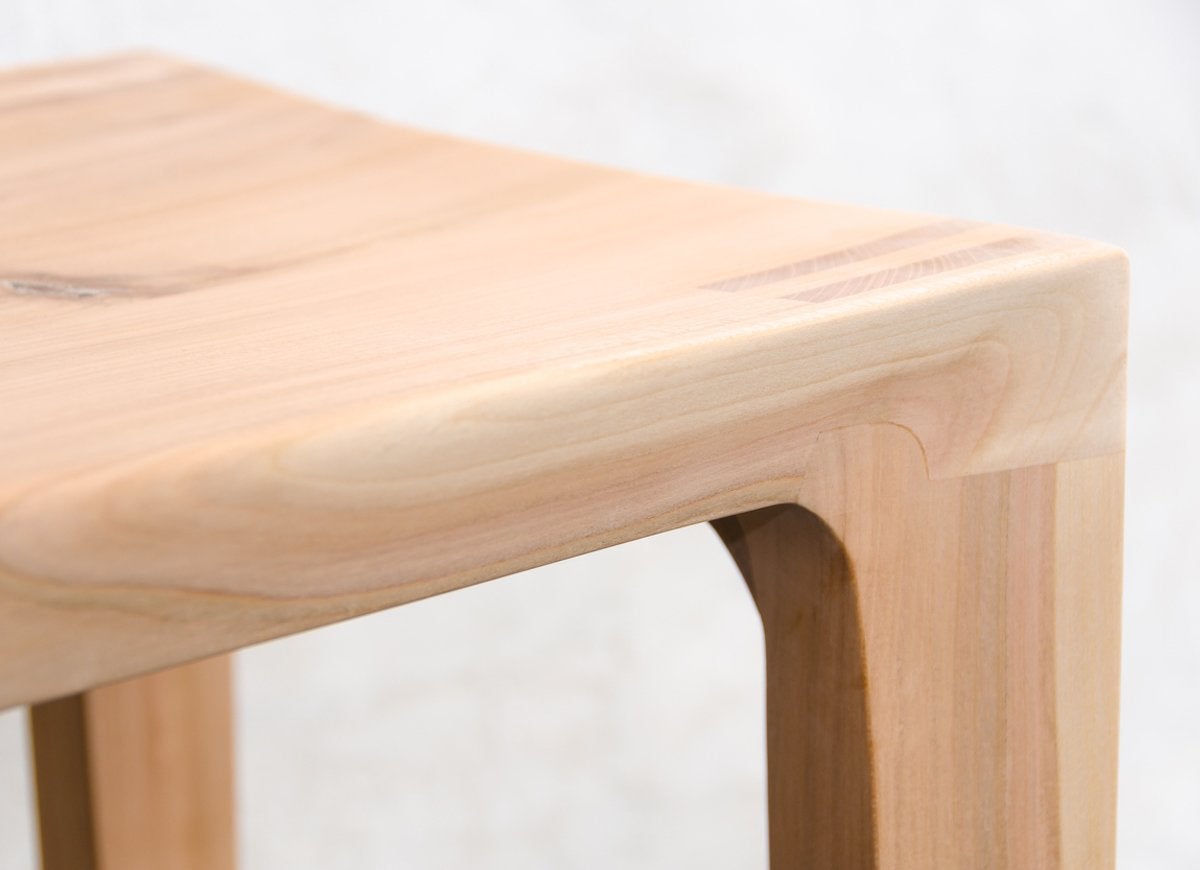
When you’re doing a DIY woodworking project, it’s a good idea to start with a fresh, clean surface. But whatever you do, if you’re working with untreated wood, don’t use a Clorox wipe to clear off dust and dirt. Because untreated or unpainted wood is porous, disinfectant wipes can leave it with a big, ugly stain.
Cleaning Leather
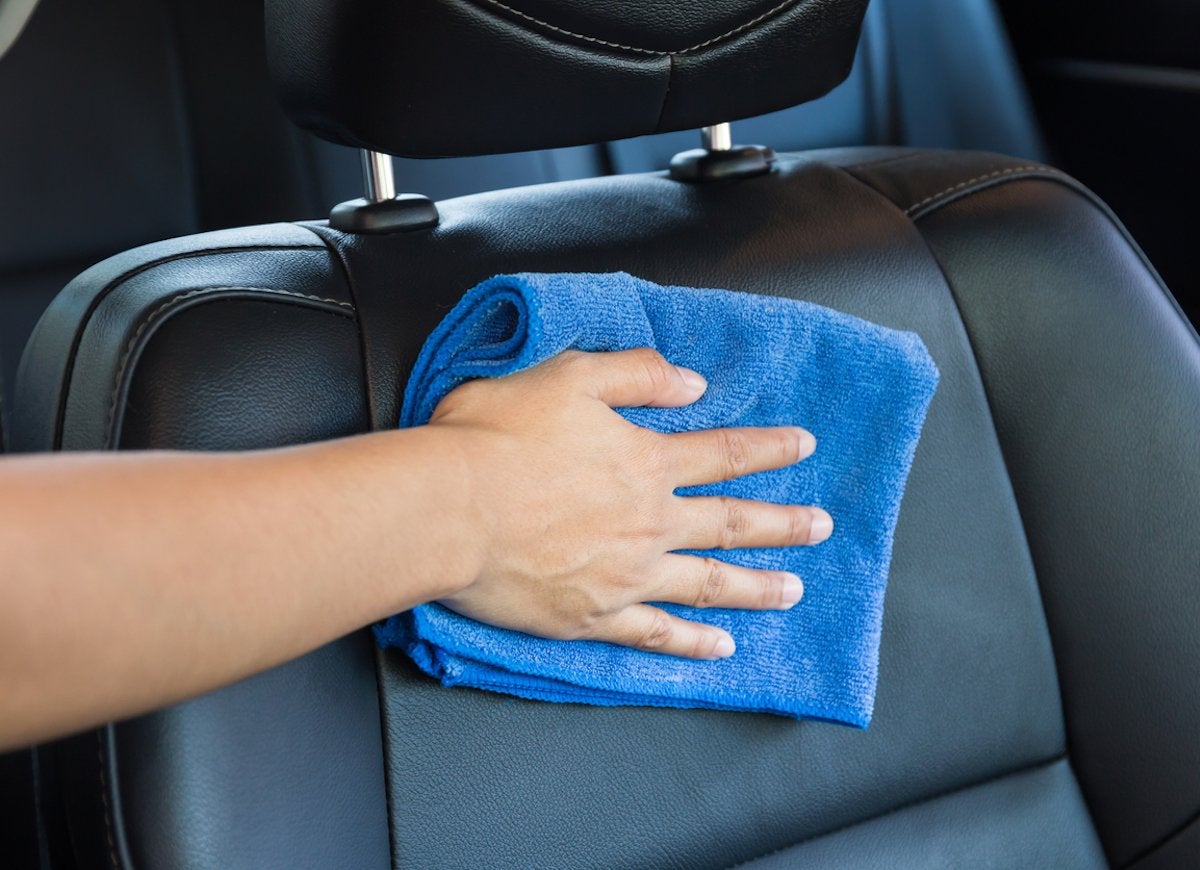
If you own a leather couch or have leather seats in your car, don’t use a Clorox wipe to clean them. The alcohol in the wipes can make your leather lose its natural oils and become dry or brittle.
Lifting Clothing Stains
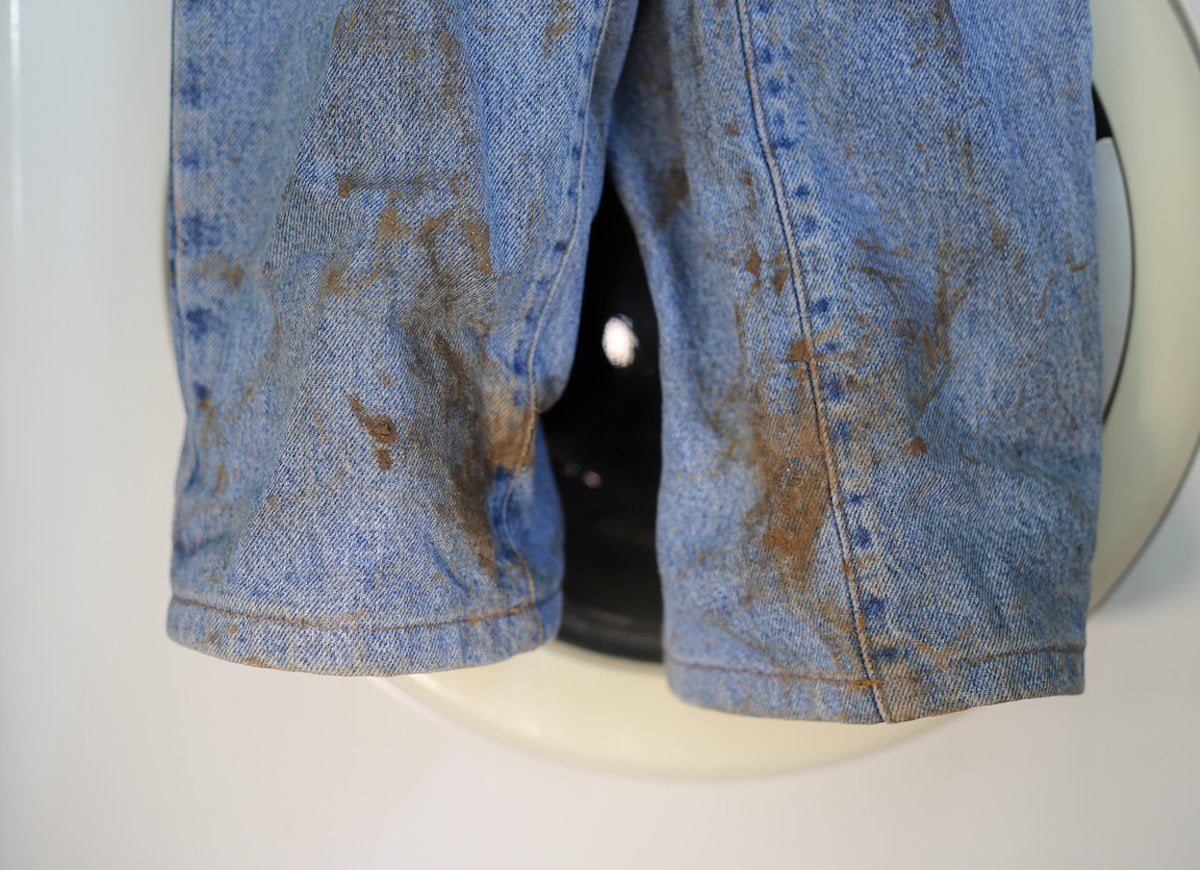
Did you spill jam on your brand-new white blouse? Don’t use a Clorox wipe to clean it off. The ingredients in the wipes can cause skin irritation and may even lead to more staining of the fabric.
Sanitizing Pet Bowls

Fido’s bowl is not exactly the picture of health: The National Sanitation Foundation named it the fourth-germiest spot in the house. Even though Clorox wipes claim to eliminate 99.9% of germs, they contain chemicals that can be dangerous to ingest and as a result shouldn’t be used where your pet will be eating or drinking.
Don’t Use a Clorox Wipe on Multiple Surfaces
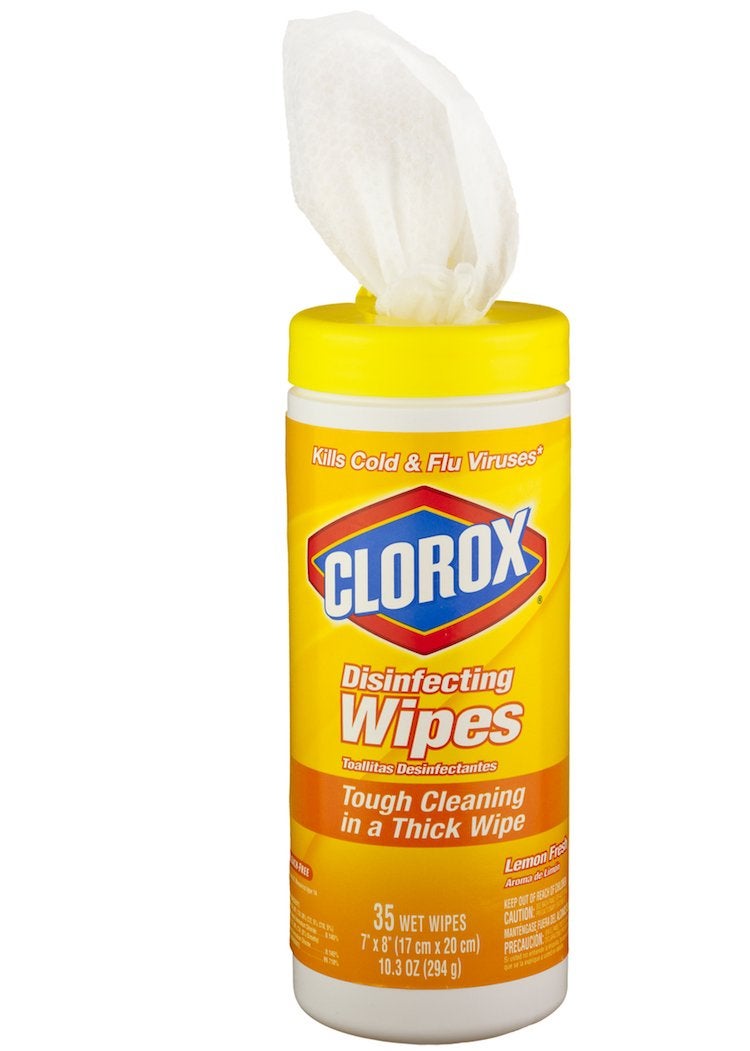
One of the things everyone loves about Clorox wipes is that they’re so easy and convenient to use, and can be used on a variety of surfaces. But that said, don’t use a single wipe to clean multiple surfaces—you may just end up spreading more germs than you’re killing. What’s the correct way to use a Clorox wipe? Use enough of the product to keep a surface visibly wet for four minutes, and then rinse with water afterward if your surface will come into direct contact with food.
Related: 11 Ultra Powerful Products That Cut Your Cleaning Time in Half

Everything You Need for a Lush and Healthy Lawn
Keeping your grass green and your plants thriving doesn’t just take a green thumb—it starts with the right tools and supplies.
